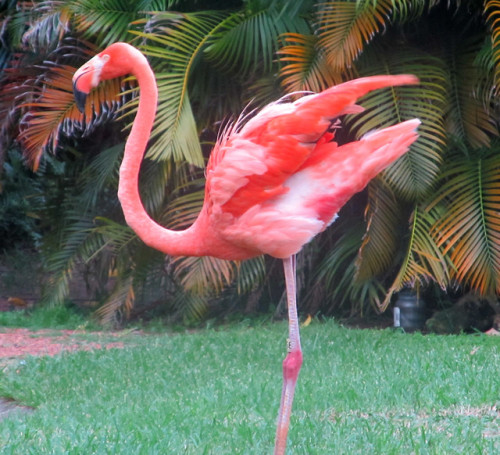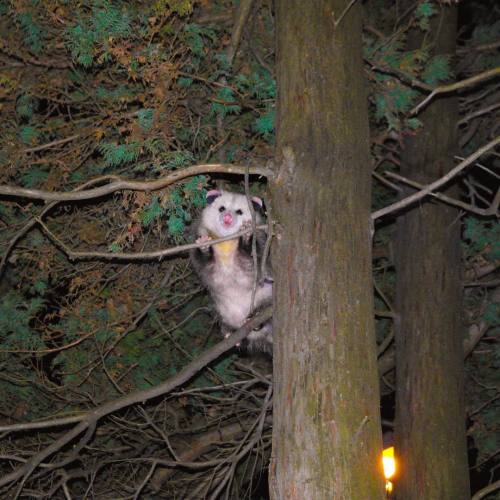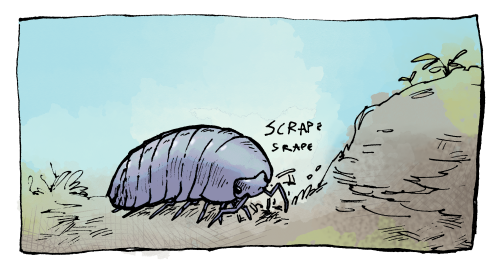Greater Flamingo

Greater Flamingo
Photo taken by me
More Posts from Linruuu and Others


PWEASE HEWP ME I’M BUWNING AWIVE


!!!!!!!his name is Gourdon!!

Trying to impress cats and failing is universal
(via)
undisclosed moodboard












Real Isopod Facts
A WALK ON THE WIDER SIDE
hello and welcome to another episode of Weird Biology with me, your host Bunjy! this week’s creature is hard to see and kind of dangerous, so we’re just going to watch our step as we-
OOP WATCH OUT!
you almost stepped on him!

you should be more careful, you could have really hurt his feelings.
it’s time to meet-


*muffled hysterical laughter*
the Gaboon Viper is found in the forests and savannas of sub-Saharan Africa. its boldly patterned scales are perfectly camouflaged against the forest floor, making it all but invisible.
its incredible striking speed and strength are renowned throughout the reptile world, and its venomous bite is powerful enough to kill even a grown man! clearly, this is not a creature to be trifled with.
and it is, as they say in herpetologist circles, a Swarthy Lad.

*continued hysterical laughter*
as you may have noticed from the pictures, the Gaboon Viper is very, uh, wide. and flat. like a pancake. a pan-snake, if you will. in fact, they’re so wide that their wikipedia page has an entire measurement category called “girth” just for them. (no, I’m not joking) and it’s over 14 inches, if you were curious. that’s usually a measurement reserved for pizzas.
there’s good reason for this, because the Gaboon Viper is the heftiest viper in the world! they generally reach only 4-5 feet long, but may weigh nearly twenty pounds. that’s completely fucking ridiculous.

that’s like a normal snake, if that normal snake had just eaten a couple of 7-pound free weights.
Gaboon Vipers are at the top of the snake list for a lot of different qualities, as it turns out. it’s not just that manhole cover physique, this snake has the WHOLE package. they are known for being incredibly fast despite their size, and for wrestling prey to the ground with their sheer strength like it’s the last five seconds of a ladder match. but now get ready for a real double whammy-
they have the longest fangs of any snake! OF ANY SNAKE. they also produce the most venom per bite of any snake! OF ANY SNAKE. wow! fuck!

aaaa! I still think you’re adorable!
those fangs are two fucking inches long, for reference. two inches. let’s think about that for a minute.
oookay we’re done thinking about that. so now let’s consider the fact that a Gaboon Viper can deliver up to 7 ml of venom per bite! alright, so that doesn’t sound like a lot. but please remember that the lethal dose for a human is 0.06 ml. jesus. imagine carrying enough poison in your face to kill like a thousand people.
and for a species that mostly eats small animals like rabbits, this is absolutely stupid amounts of overkill. like, hunting-pigeons-with-a-rocket-launcher levels of overkill.

people probably would be into that if it was allowed, actually.
alright, so we’ve definitely laid out the facts that make Gaboon Vipers so terrifying. but now I’ll hit you with the good news!
human deaths from Gaboon Viper bites are very, very, very rare. and it’s because Gaboon Vipers are very good flat boys.
no seriously, some of that is because Gaboon Vipers live way the fuck out in the woods but it’s mostly because these snakes are some of the most laid-back reptiles in existence.
yes, really.

don’t have a cow, man.
Gaboon Vipers are tolerant, docile animals that are extremely unlikely to bite you. in fact, they’re so chillax that scientists have been able to pick them up barehanded and stick them in collection boxes. (WE DO NOT RECOMMEND THIS. SCIENTISTS ARE OFTEN A LITTLE NUTS.) apparently the snakes just kind of went along with it. maybe they were bored?
usually when people ARE bitten, it’s because they didn’t see the snake and fucking stepped on it. and even then, stomping on a Gaboon Viper doesn’t always earn a bite. (BUT DON’T DO THAT. IT’S MEAN.)
they’re good sweet boys, is what I’m getting at here.

the GOODEST good boy. look at his widdle face.
thankfully, the Gaboon Viper is doing pretty okay! the species is still widely distributed, and has a conservation status of Least Concern. (it probably helps that they have so little conflict with humanity! chillness is its own virtue.)
it’s not often that I close a Weird Biology article with that kind of good news, so this deserves to be celebrated! clap your hands and jump around a bit! Yaaay, Gaboon Viper! we love your chubby little face and your ridiculously chill lifestyle!
maybe we could all take a lesson from the Gaboon Viper, and relax a little more.
–
thanks for reading! you can find the rest of the Weird Biology series here.
if you enjoy my work, maybe buy me a coffee or check out my Patreon to see extra content and support Weird Biology.
–
IMAGE SOURCES
img1- Wikipedia.zh img2- The National Zoo img3- Julie Larsen Maher @WCS img4- reptiletalk.net img5- Reptiles Magazine img6- AnimalSpot.net img7- Carnivora img8- AboutAnimals.com


SOMETHING TO SNOUT ABOUT
you’re wandering across the plains of Mongolia, wondering where the fuck you left your horse. suddenly, the ground shakes! like the beginning of the stampede scene in the Lion King. you hear a distant thunder, as if caused by many hooves! like the stampede scene in the Lion King. you shift anxiously as the noise grows louder, wishing you’d paid more attention to the Disney classics.
suddenly the herd comes over the rise, and you laugh so hard you fall over and are immediately and tragically trampled to death.
surprise! it’s the-


and it’s rude to laugh. (but boy, is it hard not to.)
the Saiga (sigh-guh) is a goat-sized antelope native to the Eurasian steppe. they’re found from the Carpathian Mountains to Mongolia. and they uh, have a bit of a nose situation going on.
and that’s the understatement of the century! the Saiga’s mighty schnozz is its defining feature, and no other hooved animal on earth has such a robust snoot. the Saiga pities their pathetic little faces for it.

that’s a lot of nose to look down. geeze.
so why this immense not-quite-trunk? maybe they use it to make noise, or to intimidate rivals? not so much, actually. both males and females have the tremendous facetrumpet, though females do lack horns and a desire to kill. (but more on that later.)
obviously this big ol clown honker must have some purpose, or it wouldn’t exist. or maybe God was just bored, who nose. (har!) but I kid, this punderful snout actually does have a purpose!

and that purpose is to look ABSOLUTELY STUNNING.
as I mentioned, Saigas are herd animals. and at some point, Evolution decided to provide them with a semi-helpful wedgie. that monster snout helps to filter dust kicked up by their 50ish neighbors out of the air they breathe, as they stumpf semi-majestically across the plains.
it also helps to warm the air they breathe in the cold months, which is an adaptation anyone who’s ever stepped out of their front door directly into a -10 hellzone is surely jealous of. (god, you don’t even know.)

I’m not bitter! I’M NOT.
and they migrate really far! herds of these ridiculous little antelopes can cross thousands of miles, and travel up to 72 miles in a single day! they ford rivers, brave valleys, and scuttle inspiringly across the tundra like they think they’re in a Lifetime movie.
their goal is to reach their seasonal feeding grounds; they spend the winters in the south and the summers in the north. like retirees, except without the tacky golf pants.

BRENDA, HAVE YOU SEEN MY SHORTS.
Saigas eat a wide variety of plants, including some that are toxic to other animals. like goats, Saigas put all of their skill points into the ‘eat anything’ slot. and it seems to have paid off; they were once found across all of Europe and Asia, and even in paleolithic North America! (though the end of the last ice age put a brutal stop to that.)
just imagine being a prehistoric hunter-gatherer and looking out your tent one day to see a moving sea of these ridiculous little muppet antelopes. I bet it was a fun time.

GROK, YOU’LL NEVER GUESS WHAT I’M LOOKING AT RIGHT NOW.
but I did promise I’d get back to the heart-full-of-murder thing, so I guess I’d better do that. Saiga are a lot like other ungulates in that their herds are mostly made up of females, with one attendant male who just kind of hangs out and get poached for his horns sometimes. at least, until breeding season. (DUN DUN DUUUN)
males spend the entire breeding season fighting each other for access to the ladies, which isn’t unusual for a hooved mammal! but what IS unusual is the fatality rate- 90% of these fights end with one male just fucking killing the other. I guess the Saiga ladies are just really into blood sport.

maybe we can get them to just watch Game of Thrones instead like normal people.
but their conservation status is another story altogether. (it’s depressing how many species this is true for. welcome to the Anthropocene, I guess. the geological era where everything sucks.)
around two decades ago, more than a million Saiga wandered across the Eurasian Steppe. but unregulated hunting for food, trophies and the Saiga’s ‘medicinal’ horns decreased their numbers to less than 50,000 in just 10 years. and if that weren’t enough, bacterial infections have been taking huge chunks out of the remaining population: a mass die-off in 2015 killed half of them.
but there is good news: these goofy little hooved bastards are now enjoying governmental protection and conservation efforts to raise their numbers. there are still around 50,000 of them and with luck and maybe a little less murder, these goatish nostril maniacs will be thundering across the plains once more.

(lord willing.)
–
thanks for reading! you can find the rest of the Weird Biology series on my tumblr here, or check out the official archive at weirdbiology.com!
if you enjoy my work, maybe buy me a coffee and support Weird Biology!
and if you’d like to see exclusive Weird Biology content, check out my Patreon today!
–
IMAGE SOURCES
img1- Tim Flach img2- Saiga Conservation Alliance img3- World Atlas img4- elelur.com img5- Andrey Giljov and Karina Karenina img6- Mongabay img7- IUCN img8- LabRoots




pancake slug (Leidyula floridana). Florida, 12/26/18
animals really don’t get better than this do they
-
 rnanlync reblogged this · 6 months ago
rnanlync reblogged this · 6 months ago -
 rnanlync liked this · 6 months ago
rnanlync liked this · 6 months ago -
 jen-kellen reblogged this · 6 months ago
jen-kellen reblogged this · 6 months ago -
 ahni-animalia reblogged this · 10 months ago
ahni-animalia reblogged this · 10 months ago -
 somethingforawhile reblogged this · 1 year ago
somethingforawhile reblogged this · 1 year ago -
 flamingothing reblogged this · 1 year ago
flamingothing reblogged this · 1 year ago -
 kaianimates liked this · 1 year ago
kaianimates liked this · 1 year ago -
 earthlycomfort reblogged this · 1 year ago
earthlycomfort reblogged this · 1 year ago -
 earthlycomfort liked this · 1 year ago
earthlycomfort liked this · 1 year ago -
 lazy-bones-69 liked this · 1 year ago
lazy-bones-69 liked this · 1 year ago -
 apastmetaphor liked this · 1 year ago
apastmetaphor liked this · 1 year ago -
 junior-goddess reblogged this · 1 year ago
junior-goddess reblogged this · 1 year ago -
 windamp reblogged this · 1 year ago
windamp reblogged this · 1 year ago -
 iwillhaveamoonbase liked this · 2 years ago
iwillhaveamoonbase liked this · 2 years ago -
 lorrainebattaglia reblogged this · 2 years ago
lorrainebattaglia reblogged this · 2 years ago -
 morose-fan reblogged this · 2 years ago
morose-fan reblogged this · 2 years ago -
 a-time-traveling-whovian liked this · 2 years ago
a-time-traveling-whovian liked this · 2 years ago -
 wanderingnelipot liked this · 2 years ago
wanderingnelipot liked this · 2 years ago -
 obsessioninc reblogged this · 2 years ago
obsessioninc reblogged this · 2 years ago -
 obsessioninc liked this · 2 years ago
obsessioninc liked this · 2 years ago -
 kyn19 reblogged this · 2 years ago
kyn19 reblogged this · 2 years ago -
 kyn19 liked this · 2 years ago
kyn19 liked this · 2 years ago -
 sheepandscales liked this · 2 years ago
sheepandscales liked this · 2 years ago -
 heckcareoxytwit liked this · 2 years ago
heckcareoxytwit liked this · 2 years ago -
 beach-king reblogged this · 2 years ago
beach-king reblogged this · 2 years ago -
 shapeshifter98 liked this · 2 years ago
shapeshifter98 liked this · 2 years ago -
 augment-techs reblogged this · 2 years ago
augment-techs reblogged this · 2 years ago -
 augment-techs liked this · 2 years ago
augment-techs liked this · 2 years ago -
 cheloneuniverse liked this · 2 years ago
cheloneuniverse liked this · 2 years ago -
 keendaanmaa liked this · 2 years ago
keendaanmaa liked this · 2 years ago -
 freakymysty reblogged this · 2 years ago
freakymysty reblogged this · 2 years ago -
 m-o-p-e reblogged this · 3 years ago
m-o-p-e reblogged this · 3 years ago
